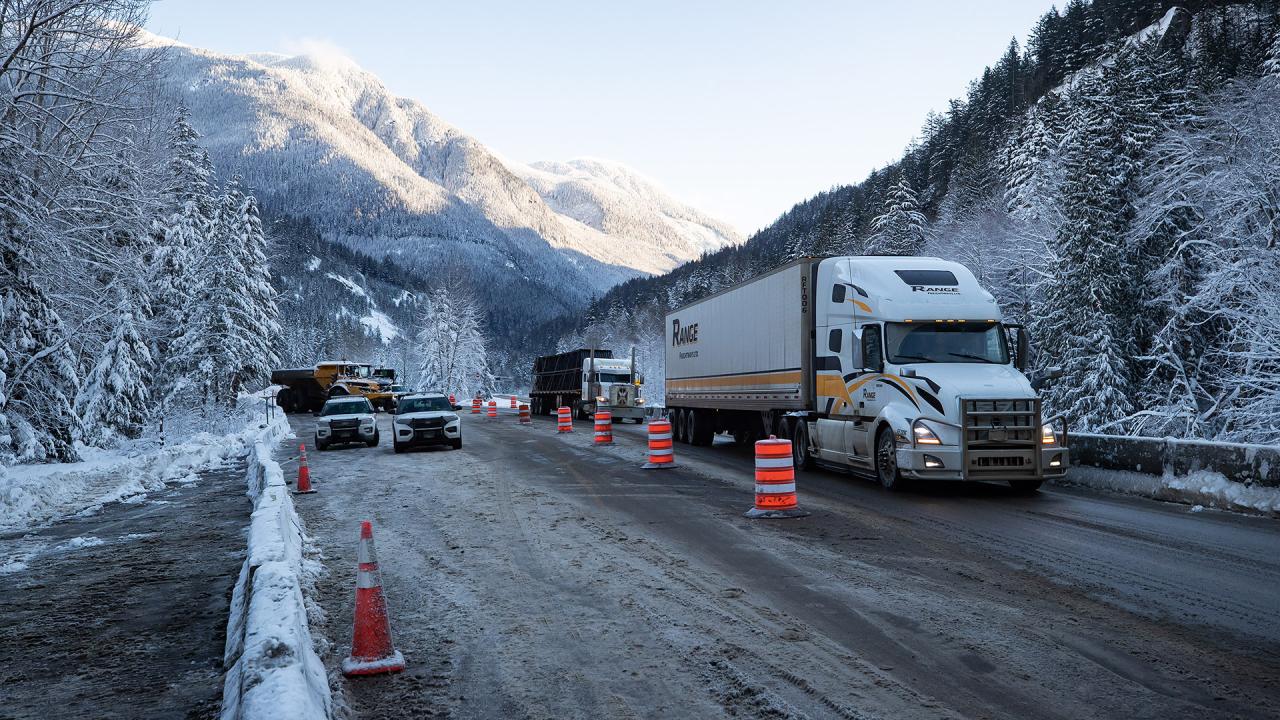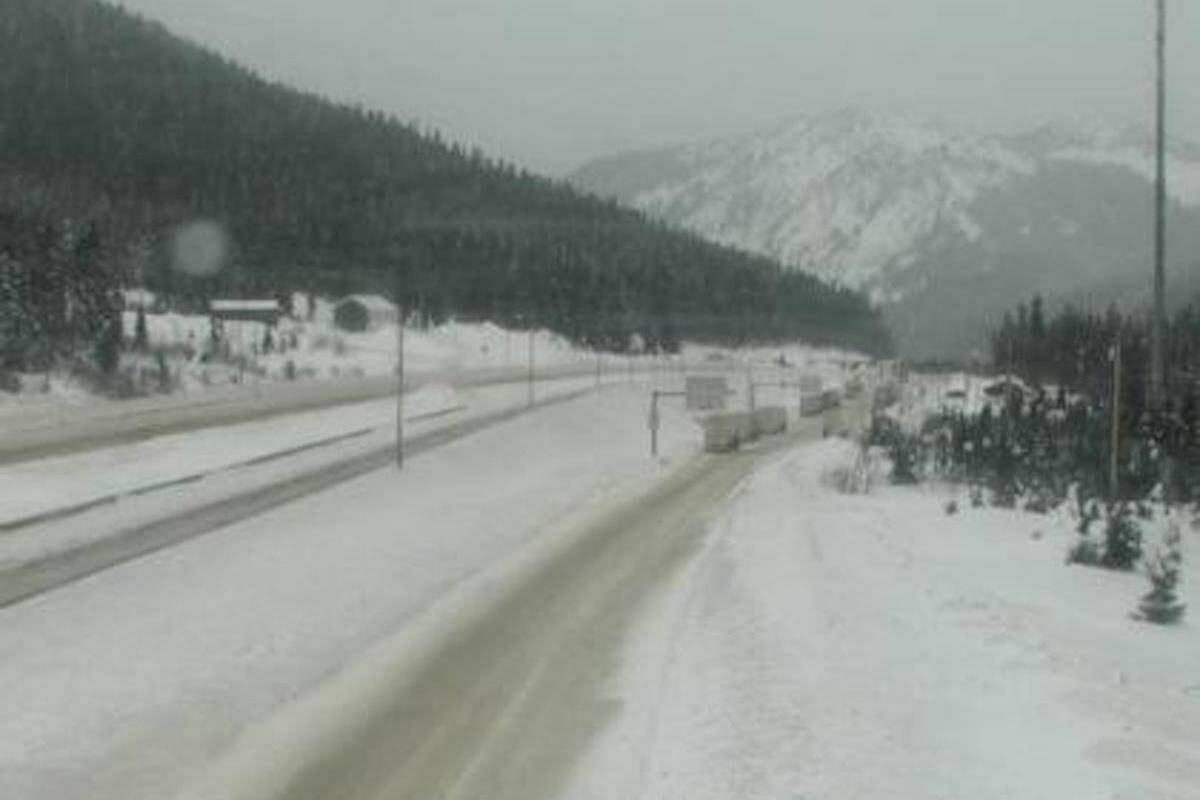Coquihalla weather cameras provide crucial real-time views of conditions on this challenging mountain highway. These cameras offer drivers and transportation officials invaluable insights into road safety, allowing for informed decisions about travel and resource allocation. Understanding the limitations and benefits of this technology, alongside alternative information sources, is key to navigating the Coquihalla safely and efficiently throughout the year.
The Coquihalla Highway’s unique geography, with its significant elevation changes and exposure to various weather systems, makes real-time monitoring essential. From heavy snowfall and icy conditions in winter to sudden fog and rain in other seasons, the highway presents a dynamic and sometimes hazardous environment. The cameras contribute to a comprehensive approach to safety, working alongside weather forecasts, traffic reports, and mobile applications to keep travelers informed and safe.
Coquihalla Highway Weather: A Comprehensive Overview
The Coquihalla Highway, a vital transportation artery in British Columbia, Canada, presents unique challenges due to its mountainous terrain and unpredictable weather patterns. This article explores the highway’s weather characteristics, the role of weather cameras in monitoring conditions, and the impact of weather on traffic flow. We will also examine alternative information sources for safe travel planning.
Geographical Influences on Coquihalla Highway Weather
The Coquihalla Highway’s location within the Cascade Mountains significantly influences its weather. The highway traverses diverse elevations, resulting in varied microclimates. Higher elevations experience colder temperatures, increased snowfall, and higher wind speeds compared to lower elevations. The steep slopes and narrow canyons funnel winds, creating localized weather events. Orographic lift, where air is forced upward as it encounters mountains, contributes to precipitation, especially snowfall in winter.
Typical Weather Conditions on the Coquihalla Highway

The Coquihalla Highway experiences distinct weather patterns throughout the year. Summers are generally warm and dry, although afternoon thunderstorms can occur. Winters are characterized by heavy snowfall, icy conditions, and freezing temperatures, particularly at higher elevations. Spring and autumn bring transitional weather, with periods of rain, snow, and fluctuating temperatures. Extreme weather events, such as blizzards and ice storms, are not uncommon.
Weather Conditions at Different Elevations
Elevation plays a crucial role in determining weather conditions along the Coquihalla. Lower elevations may experience rain while higher elevations simultaneously experience snowfall. Temperature differences can be significant, even over short distances. Wind speeds also tend to increase with elevation, creating challenging driving conditions, especially for high-profile vehicles. The transition zones between elevations can be particularly hazardous due to rapid changes in weather conditions.
Historical Overview of Significant Weather Events
The Coquihalla Highway has a history of being impacted by severe weather events. Notable examples include the 2021 atmospheric river that caused extensive flooding and road closures, and numerous winter storms that have led to prolonged highway closures and stranded motorists. These events highlight the importance of reliable weather monitoring and proactive traffic management strategies.
Functionality and Usefulness of Coquihalla Highway Weather Cameras
Weather cameras strategically positioned along the Coquihalla Highway provide real-time visual information on road conditions. These cameras are essential tools for drivers, transportation officials, and emergency responders.
Monitoring the Coquihalla Highway’s challenging weather conditions often requires reliable visual data. Real-time feeds from the Coquihalla weather camera are invaluable for drivers and transportation companies alike. For aerial perspectives and advanced weather forecasting, however, integrating data from companies like archer aviation could significantly enhance situational awareness. Ultimately, the goal is to improve safety and efficiency on the Coquihalla, leveraging all available technological resources, including ground-based cameras and advanced aerial surveillance.
Purpose of Weather Cameras
The primary purpose of these cameras is to provide visual confirmation of current road conditions, supplementing weather forecasts and reports. This real-time data allows for more informed decision-making regarding road closures, traffic management, and driver safety.
Benefits for Drivers and Transportation Officials

Real-time weather camera feeds offer significant benefits. Drivers can make informed decisions about their travel plans based on current conditions. Transportation officials can use the camera data to assess road conditions, deploy resources effectively, and implement traffic control measures as needed. This improves road safety and minimizes disruptions to traffic flow.
Limitations of Weather Camera Reliance
While valuable, weather cameras have limitations. Images may not capture all hazards, particularly those obscured by snow or fog. Camera angles may not always provide a comprehensive view of the entire roadway. Reliance solely on visual data is insufficient for accurate assessment of all road conditions.
Complementing Weather Forecasting Methods
Weather camera data effectively complements traditional weather forecasting. Real-time images confirm or adjust predictions, providing a more accurate and up-to-date understanding of the situation on the ground. This integrated approach enhances the accuracy and timeliness of road condition information.
Analysis of Coquihalla Weather Camera Images
Analyzing images from various camera locations along the Coquihalla provides valuable insights into the variability of weather conditions across the highway.
Comparison of Camera Image Quality
| Location | Image Resolution | Update Frequency | Viewing Angle |
|---|---|---|---|
| Hope (Lower Elevation) | 1280×720 | Every 5 minutes | 120 degrees |
| Coquihalla Summit (High Elevation) | 1920×1080 | Every 2 minutes | 90 degrees |
| Nicola Canyon (Mid-Elevation) | 1280×720 | Every 5 minutes | 150 degrees |
| Juliet (Lower Elevation) | 1920×1080 | Every 3 minutes | 100 degrees |
Note: These values are illustrative examples and may not reflect actual camera specifications.
Effects of Lighting and Weather on Image Interpretability
Variations in lighting and weather significantly impact image clarity. Nighttime images often have reduced visibility. Heavy snow or fog can severely limit the effectiveness of cameras, making it difficult to assess road conditions accurately. Backlighting from the sun can also create glare, hindering visibility.
Visual Indicators of Hazardous Road Conditions
Several visual indicators suggest hazardous conditions. Heavy snowfall, ice accumulation, reduced visibility due to fog, and standing water on the roadway are clear signs of potential danger. The presence of snowplows or emergency vehicles in the camera’s view also suggests challenging conditions.
Potential Improvements to Camera Systems
Improvements could include higher-resolution cameras, more frequent image updates, improved lighting for nighttime visibility, and wider viewing angles to capture a larger area of the roadway. Advanced image processing techniques could enhance visibility in adverse weather conditions.
Impact of Weather on Coquihalla Highway Traffic

Weather conditions significantly impact traffic flow on the Coquihalla Highway. Adverse weather can lead to delays, closures, and accidents.
Relationship Between Weather and Traffic Flow
The relationship is direct; severe weather invariably leads to reduced traffic flow. Heavy snowfall often necessitates speed reductions or complete closures. Icy conditions increase the risk of accidents, leading to further traffic congestion. Fog significantly reduces visibility, creating hazardous driving conditions.
Examples of Weather-Related Traffic Disruptions
Numerous examples exist. Winter storms frequently cause significant delays and closures, sometimes for extended periods. The 2021 atmospheric river resulted in widespread flooding and multiple days of highway closures. Ice storms can also lead to significant traffic disruptions.
Traffic Management Strategies
Transportation authorities employ various strategies. These include speed restrictions, chain regulations, and highway closures when conditions warrant. Snowplowing and de-icing operations are crucial for maintaining safe travel. Real-time traffic updates and advisories are provided to drivers.
Impact of Different Weather Events, Coquihalla weather camera
Snowfall and ice storms have the most significant impact, often leading to closures. Heavy rain can cause flooding and reduce visibility. Fog creates significant visibility challenges, particularly in mountainous areas. Each weather event poses unique challenges to traffic management.
Alternative Information Sources for Coquihalla Highway Travel
Drivers should utilize multiple information sources to make informed travel decisions.
Guide to Alternative Information Sources
Drivers should consult DriveBC (the official British Columbia highway information website), weather forecasts from Environment Canada, and mobile navigation applications offering real-time traffic updates. Local news and radio broadcasts can also provide valuable information.
Monitoring weather conditions, especially in challenging areas like the Coquihalla Highway, is crucial for safe travel. Real-time views, like those offered by a Coquihalla weather camera, provide valuable insights. For a different perspective on live camera feeds, consider checking out the port dover live camera , showcasing a completely different environment. Returning to the Coquihalla, understanding the weather patterns through dedicated cameras is key to planning a safe journey.
Role of Forecasts, Reports, and Mobile Applications
Weather forecasts provide predictive information, while traffic reports offer real-time updates on conditions. Mobile navigation apps integrate these data sources, providing comprehensive information to drivers. Combining these resources helps drivers make informed decisions about travel routes and timing.
Combining Information for Improved Travel Planning
Integrating information from various sources enhances travel planning. For example, a driver might consult a weather forecast predicting snowfall, then check DriveBC for road closures or chain regulations, and finally use a navigation app to find an alternative route.
Reliability and Accuracy of Information Sources
Official sources like DriveBC and Environment Canada are generally considered reliable. However, the accuracy of information can vary, particularly in rapidly changing weather conditions. Mobile apps often rely on user-submitted data, which may not always be accurate or up-to-date.
Visual Representation of Weather Data: Coquihalla Weather Camera
Weather camera images offer a powerful visual representation of conditions on the Coquihalla Highway.
Typical Winter Scene
A winter scene might show the highway covered in a blanket of snow, with vehicles driving cautiously. Trees and surrounding mountains would be heavily laden with snow, creating a picturesque but potentially hazardous landscape. Visibility might be reduced, with snow swirling in the wind.
Typical Summer Scene
A summer scene would depict clear skies, lush green vegetation along the roadside, and vehicles moving freely. The mountains would be visible in the background, and the overall atmosphere would be bright and sunny.
Scene Showing Adverse Weather Conditions
A scene showing adverse conditions could depict heavy snowfall, with visibility reduced to near zero. The highway might be partially obscured by snowdrifts. The image might show slow-moving vehicles or even stopped traffic, highlighting the safety concerns.
Integration into Real-Time Traffic Map
A weather camera image could be integrated into a real-time traffic map by overlaying the image onto a section of the highway, providing a visual representation of current conditions at that specific location. This would enhance the map’s ability to convey real-time information to drivers.
Ultimately, the Coquihalla weather cameras represent a vital tool for ensuring safe passage along this important transportation artery. While they provide a direct visual assessment of current conditions, it’s crucial to remember that they are most effective when used in conjunction with other sources of weather and traffic information. By combining visual data with forecasts and reports, drivers and authorities can make well-informed decisions, minimizing risks and maximizing the efficiency of travel on the Coquihalla Highway.
FAQ Compilation
What is the best time of day to view the Coquihalla weather cameras for the clearest images?
Generally, images are clearest during daylight hours, though lighting conditions can vary depending on weather and camera location. Early morning and late afternoon might offer some challenges due to sun angle.
How often are the Coquihalla weather camera images updated?
Update frequency varies by camera but is typically every few minutes. Check the specific camera feed for details.
Are there any mobile apps that integrate Coquihalla weather camera feeds?
While there isn’t a dedicated app solely for Coquihalla weather cameras, many traffic and weather apps may incorporate feeds from various sources, potentially including these cameras.
If a camera is offline, where can I find alternative information?
Check DriveBC, other weather services (Environment Canada), and news reports for updates on Coquihalla conditions.
